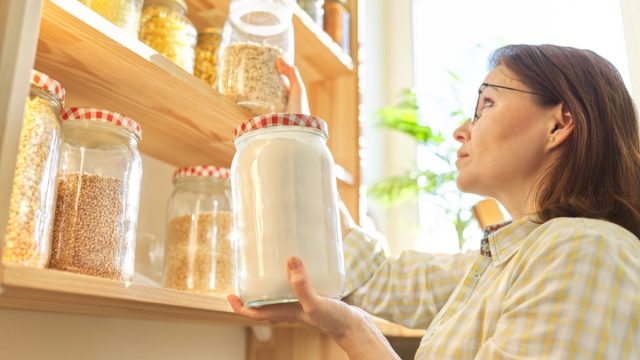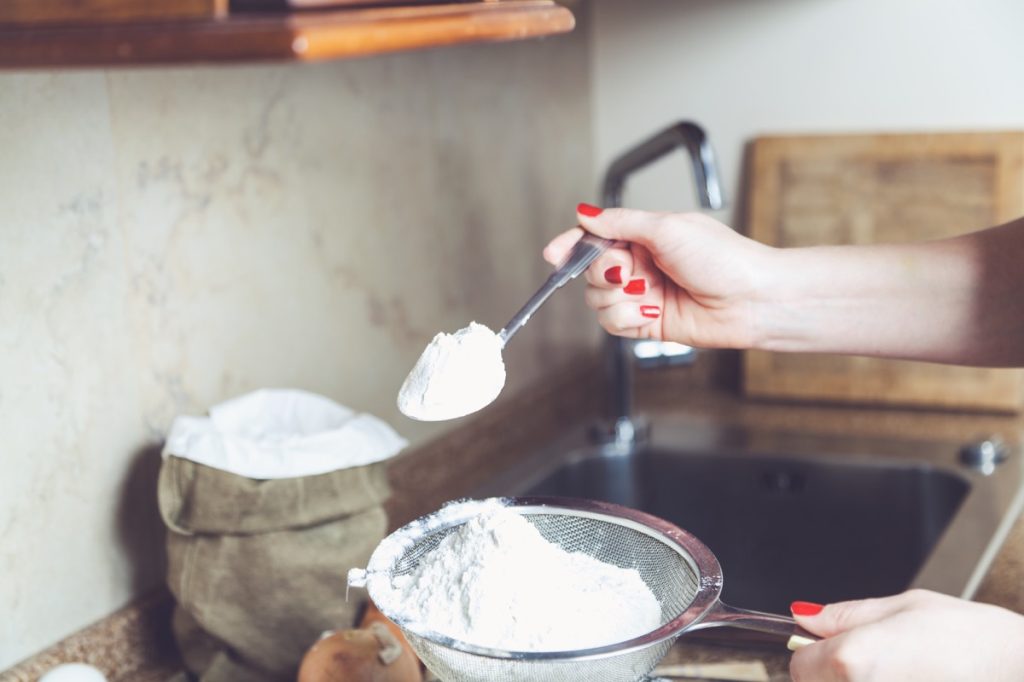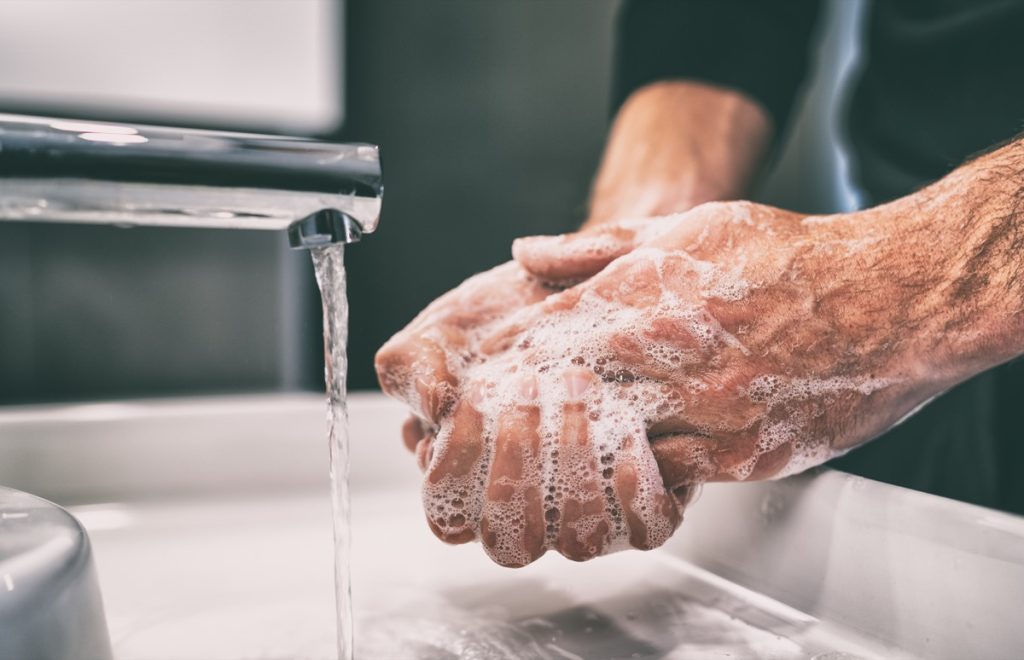The One Pantry Staple You Should Never Eat Raw, Says the CDC
This one common food item was responsible for two recent E. coli outbreaks.

When it comes to whipping up your favorite meals, having certain pantry staples on hand can seriously simplify your time spent in the kitchen. Stock up well enough and there's no shortage of meals you can make from your cupboard's contents.
Yet according to the Centers for Disease Control and Prevention (CDC), there's one pantry item that could be putting you at risk of foodborne illness if you make the mistake of eating it raw. The health authority says that consuming this one extremely common food—or even just handling it without care—can spread E. coli or other bacterial infections. To make matters worse, it may even contaminate your other pantry items if stored improperly. Read on to find out which pantry staple you should never eat raw, and what to do instead.
RELATED: Never Make This One Food With Your Instant Pot, CDC Says.

Because flour is ground and processed, many people assume it's also cooked, and therefore safe to eat as is. However, the CDC warns that flour is typically raw, and is usually not treated to kill germs before hitting the shelves in stores.
"Harmful germs can contaminate grain while it's still in the field or at other steps as flour is produced," the CDC explains. "Bacteria are killed when food made with flour is cooked," the CDC adds, meaning your best bet for safe consumption is to assume it's raw, and cook any food with flour in it to over 140 degrees Fahrenheit.
If you've never give a second thought to the safety of this pantry staple, consider this: according to a study published in the journal Nutrients, grains "represent one of the main dietary sources of food-borne contaminants." There are many potential ways that contamination can occur, including "air, dust, soil, water, insects, rodents, birds, animals, microbes, humans, storage and shipping containers, and handling and processing equipment," the study's researchers say.
RELATED: If You Notice This in Your Pantry, Grab a Mask and Gloves, CDC Warns.

Not eating raw flour may seem easy enough—after all, it's not exactly an enticing ingredient on its own. However, CDC experts say that many people end up consuming it in the form of raw cookie dough or other types of baking batter. These are known to be doubly dangerous for also containing Salmonella-causing raw eggs. "Bacteria are killed only when food made with flour is cooked. This is why you should never taste or eat raw dough or batter—whether made from recalled flour or any other flour," the CDC warns.
However, there are safe ways to satisfy your cookie dough craving, the health organization says. "Some companies and stores offer edible cookie dough that uses heat-treated flour and pasteurized eggs or no eggs," the CDC explains. And thankfully, these are used in most commercially available cookie dough ice creams, according to Consumer Reports.

According to the CDC, raw flour has been linked to two recent E. coli outbreaks in 2016 and 2019. More than 80 people became ill with the bacterial infection between the two incidents, the health authority says.
That's why the CDC urges consumers to look out for symptoms of E. coli, which often include "severe stomach cramps, diarrhea (often bloody), and vomiting" within three to four days of consuming food tainted with the bacteria. While most patients recover within a week, the CDC warns that others may develop hemolytic uremic syndrome (HUS), a serious illness which can result in "kidney failure, stroke, and even death."
For the latest food safety news sent directly to your inbox, sign up for our daily newsletter.

Not only can consuming raw flour make you sick, but so can handling it carelessly. The CDC says that in addition to not tasting or eating uncooked flour and instead cooking it to a safe temperature, you should store it separate from foods you eat raw. "Because flour is a powder, it can spread easily," making it likely to contaminate other food items in your pantry, the CDC explains.
Additionally, it's important to clean up carefully after handling raw flour. "Wash bowls, utensils, countertops, and other surfaces with warm, soapy water," the CDC says, adding that you should "wash your hands with running water and soap after handling flour, raw eggs, or any surfaces they have touched."
RELATED: Never Wash These 4 Foods Before Cooking Them, CDC Warns.





















